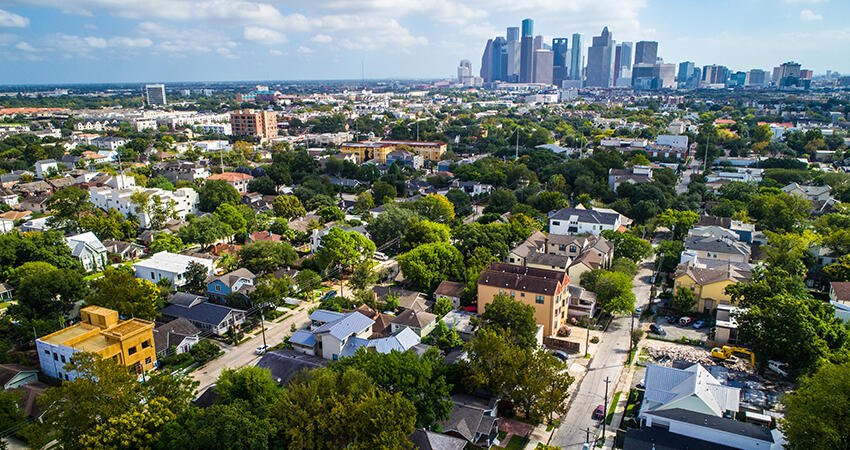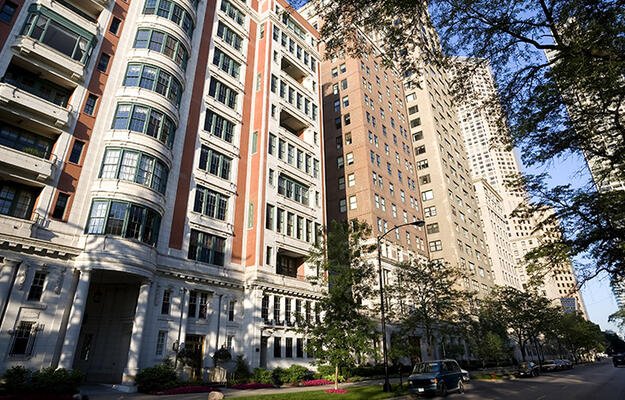
(Roschetzky Photography/Shutterstock)
Data Underscore the Need to Preserve Affordable Housing
- Title:
-
Preserving Affordable Housing in Harris County
- Author:
-
Luis Guajardo, Stephen Averill Sherman, John Park, and William Fulton
- Source:
- Publication Date:
-
2021
As the nation's supply of affordable rental housing shrinks and demand increases, efforts to preserve existing affordable housing will be vital. Preserving existing affordable housing has a variety of economic and social benefits and is typically more cost-efficient than building new affordable units.
There are generally two types of affordable housing: housing that is publicly assisted, either through subsidies, such as Section 8 properties, or designed with affordability mandates, such as low-income housing tax credit (LIHTC) properties, and naturally occurring affordable housing (NOAH), which refers to units that are affordable because of market forces (the authors acknowledge NOAH is a controversial term in housing parlance). As the housing affordability crisis deepens, NOAH units are increasingly affordable because of substandard quality, unfavorable locations, or other aging-related reasons.
Despite their prevalence, NOAH units are not well defined, tracked, or understood, making it difficult to identify which properties are at risk of becoming unaffordable or in need of repairs. Subsidized housing units face their own preservation challenges; specifically, different programs have expirations on mandatory affordability. Properties developed with project-based rental assistance have subsidies that expire in 20 to 40 years unless the owner elects to renew. Likewise, LIHTC properties must remain affordable for at least 15 years, but affordability requirements may lapse after that. As these buildings move out of mandated affordability periods, the cost of units may spike, reducing the stock of affordable properties.
This study of Harris County identifies affordable housing preservation policies and programs in the Houston area, documents the range and extent of affordable housing, and describes best practices that could help stem the loss of local affordable housing stock.
The researchers gathered data from the National Housing Preservation Database for information on the number of federally assisted units. They also used data from the Houston Local Initiatives Support Corporation and January Advisors on local NOAH. In addition, the authors consulted recent peer-reviewed research into affordable housing preservation and gathered data on preservation programs and projects across the nation.
By documenting Harris County’s affordable housing landscape, the authors aim to help policymakers, financiers, and the nonprofit sector develop tailored strategies for managing and leveraging the existing supply of affordable housing.
Key findings
- In Harris County, 85 percent of affordable housing is naturally occurring, and many of these units are located in neighborhoods far from employment centers and amenities.
- Harris County has six times as many NOAH units as publicly assisted units. The authors identified 315,000 NOAH units in the county, compared with 55,000 units receiving federal housing assistance from the LIHTC program, Section 8 project-based programs, and other programs.
- NOAH units are predominantly older and require high-cost maintenance that some landlords cannot afford. Spending money on upgrades may entail rent increases, which means the unit may cease to be affordable.
- The county’s appraisal data show 57 percent of NOAH units are graded on their quality surveys as average, low, or very low.
Policy implications
- To address preservation challenges, the authors suggest local housing advocates invest in and create systems to identify when, where, and how much existing subsidized affordable housing will expire.
- One of the major challenges to preserving NOAH properties is the lack of accurate, robust data on their physical condition. With programmatic and regular inspections, authorities can provide accessible, up to-date, and geocoded information to both the public and officials to identify properties in need of repairs.
- Local policymakers can leverage local financing tools and policymaking to fund the preservation and rehabilitation of NOAH, and state housing agencies may have to form stronger partnerships with local affordable housing partners to assist efforts to preserve expiring LIHTC units.
- Jurisdictions can offer tax abatements or exemptions as incentives to preserve affordability and to rehabilitate or upgrade units.
- The authors cite cooperatively owned housing as an emerging way to reduce the scale and scope of future preservation challenges.
- The authors suggest prioritizing the protection of vulnerable NOAH stock along high-frequency transit corridors.


